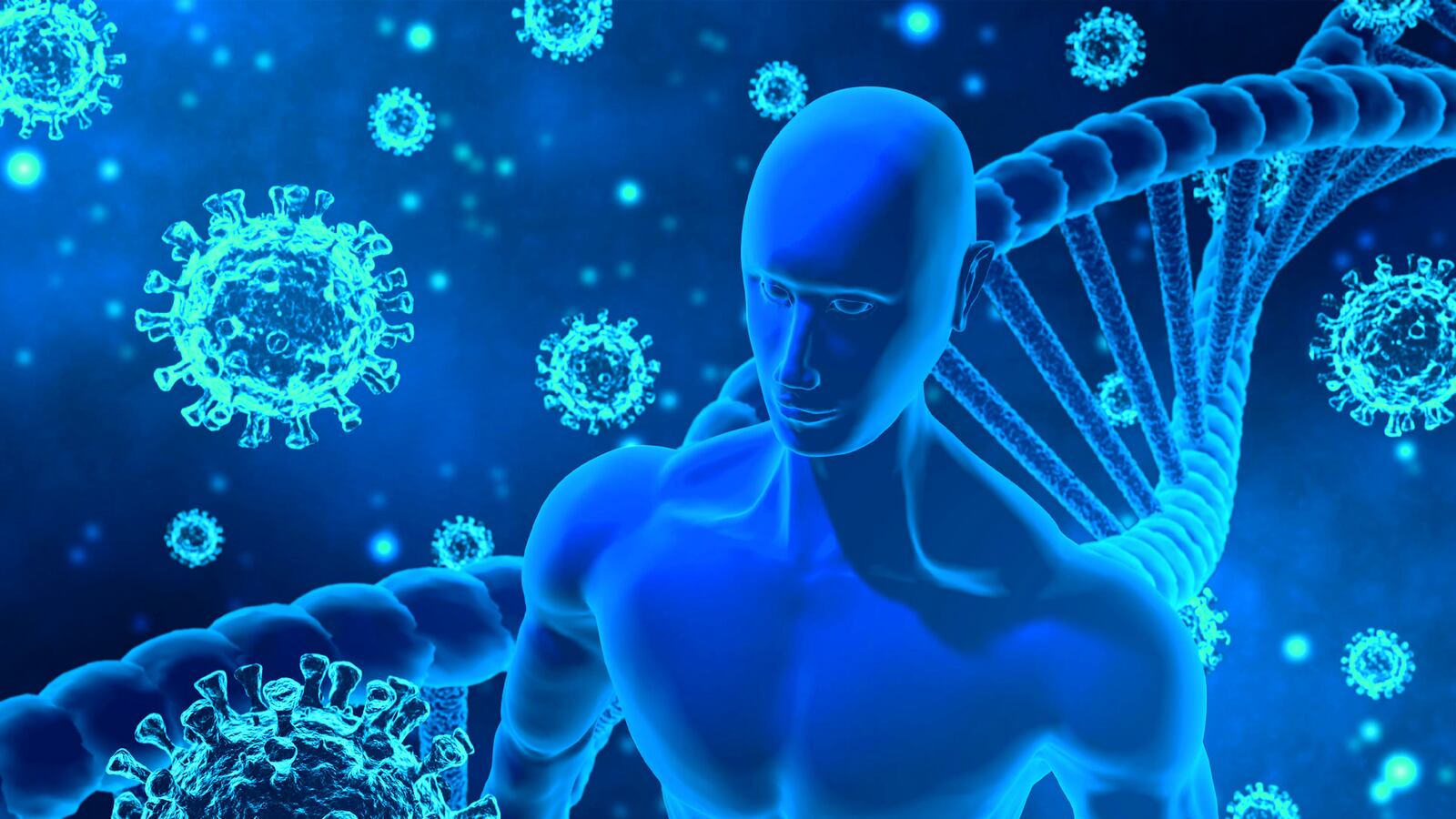Drug development is a long, costly process. In non-pandemic periods, a new pharmaceutical product could gobble up a billion dollars and a decade from start to finish. So as thousands of people per week die of COVID-19 in the United States, researchers are scrambling to make headway via their only shot at speeding up the process: finding a drug that already exists.
The problem is that even if they limit themselves to testing only those drugs that have already been approved by the FDA, researchers still have 20,000 drug possibilities to sort through. That’s where AI comes in.
Welcome to Rabbit Hole, where we dive deep on the biggest story. It’s for Beast Inside members only. Join up today.
Biomedical scientist Karen Akinsanya, head of discovery R&D for pharmaceutical company Schrödinger, said on a recent panel that her team was approached by a number of academics and other companies, from Gilead—which recently submitted an FDA application to repurpose their remdesivir drug Veklury for COVID-19 treatment—to Google Cloud—who were interested in using AI to speed the discovery of antivirals. “Rather than compete, we decided to collaborate,” she said, “with the idea of identifying a small molecule that could serve as an antiviral.” The alliance has pooled their resources to conduct “ultra-large screens of chemical space” looking for drug-worthy molecules that could solve the puzzle, she added.
She’s not alone. In the University of California Riverside lab of Anandasankar Ray, a professor of molecular, cell and systems biology, researchers are using a machine learning platform to “very rapidly” screen 14 million existing chemicals for the right combination of properties to treat COVID-19, he told The Daily Beast. According to Ray, this means “most of the purchasable chemicals that are out there in the chemical universe.” The research was published this month in Heliyon.
Ray’s team used their platform to narrow the pool “to about 100,000 chemicals that the FDA has already seen,” he said. “Some of them are approved drugs for other conditions, and some of these are food and flavor chemicals that the FDA has already approved for some form of human use. We said, ‘These are ideal candidates, but then, let's look for the most practical one in the short term.’”
The process has so far resulted in the isolation of dozens of small molecules predicted to block ACE2 receptors—proteins on the surface of many types of human cells which are thought to be the entry points for SARS-CoV-2 (the novel coronavirus) into our systems—or to target 55 of the 69 other druggable human proteins thought to interact in some way with the virus. From there, they narrowed even further, identifying the drugs that also have favorably low toxicity and even the level of chemical volatility necessary to be vaporized.
That way, Ray said, the resulting drug could be administered by inhaler—a pursuit shared by several other drug developers—making it potentially more affordable and easier to mass-apply than other kinds of pharmaceuticals.
The next step for these hundreds of promising drug molecules is to be tested in a lab setting on cellular models for COVID-19. In most cases, that step will involve Ray and his team partnering with other institutions to help with the preclinical research. “In subsequent experiments, if any turn out to be efficacious, because they are chemicals already known to the FDA,” Ray said, “we will be able to rapidly move them through to human clinical trials.”
In the first SARS pandemic, AI was not advanced enough to build a warp-speed drug pipeline. For COVID-19 drug discovery, modern technology means a huge leap forward. But while these methods could shave years off the drug-discovery process, Dr. Chris Seymour, an intensivist at University of Pittsburgh Medical Center currently involved in a large-scale AI-powered COVID-19 clinical trial program, said the rest of the timeline can only be sped up so much.
Seymour told The Daily Beast that in a non-pandemic setting, results from a model that scans potential compounds would take “many years” to get from an offline search to a patient needing treatment. In COVID, cutting it down to one to two years could be possible—maybe.
Seymour is working on an AI platform that picks up where Ray’s leaves off. The REMAP-COVID19 trial uses machine learning to pull together data from patients enrolled in clinical trials across 200 sites in 14 countries around the world, continuously learning in real time what therapies and combinations of therapies are performing best. If a major trial discontinues a treatment, which happens when it is found to be either unsafe or inefficacious, the platform will allow its participating network of drug trial administrators to filter patients around the world into trials for more promising drugs. This helps to keep critical information flowing and could make the trial process overall more efficient.
But no matter how powerful these AI drug discovery pipelines are, there will always be a bottleneck. “To get expanded access or even registration from the FDA for COVID, the timeline is months to a year,” Seymour said. “At the end of the day, you still have to do the clinical trial, and the trial itself will take months if not longer to enroll patients.”
Any further shortcuts in that process carry life-or-death risks. For example, the FDA gave emergency authorization to hydroxychloroquine for use against COVID-19; after much back and forth, it has been discontinued in major trials, and there is growing suspicion that it is dangerous for COVID-19 patients. On Aug. 23, the FDA granted the same green light to convalescent plasma for emergency use, announcing the news of the “promising” treatment as an “achievement” for the agency. The very next day, FDA head Stephen Hahn was backpedaling, saying he overstated the treatment’s risk reduction benefits. Only time will tell whether it proves safe and effective.
“One of the challenges of a new disease is that as we’re testing, we’re still learning new things,” Seymour said. “Out of the thousands of choices of treatments, there are drugs that in the past have treated pneumonia, SARS or MERS, and those are low-hanging fruits,” he said. “But we don’t know what we don’t know. That takes time.”







